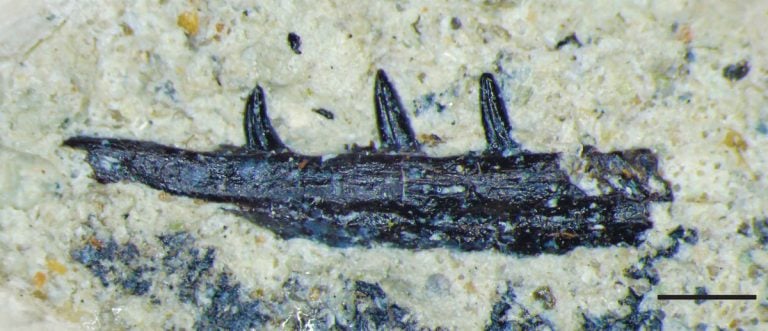A groundbreaking discovery in Arizona’s Late Triassic Chinle Formation has revealed a new species of venomous reptile, Microzemiotes sonselaensis. This small reptile, approximately 30 cm in length, sheds light on the independent evolution of venom systems in reptiles.
Key Findings:
- Venom-conducting teeth with deep grooves.
- Independent evolution of venom systems in reptiles.
- One of the earliest known reptiles with preserved venom-conducting teeth.
Study Details:
- Fossil discovered in Arizona’s Late Triassic Chinle Formation.
- Partial left dentary with distinctively grooved teeth.
- Comparison to modern venomous species, such as beaded lizards and rear-fanged snakes.
Implications:
- Expands knowledge of Mesozoic reptile venom systems.
- Highlights evolutionary diversity of venom delivery systems.
- Insights into ancient ecosystems and feeding methods.
Reference:
“A small venomous reptile from the Late Triassic (Norian) of the southwestern United States” (PeerJ Life & Environment, October 24, 2024)
Unlocking Venom Evolution:
- Microzemiotes sonselaensis represents an independent evolution of venom systems.
- Comparison to modern venomous species reveals diverse venom delivery systems.
Ancient Ecosystems:
- Discovery sheds light on feeding methods and ecological dynamics.
- Contributions to the broader understanding of venom evolution.
Share Your Thoughts:
What do you think is the significance of this discovery in understanding reptile evolution? Join the conversation!

















